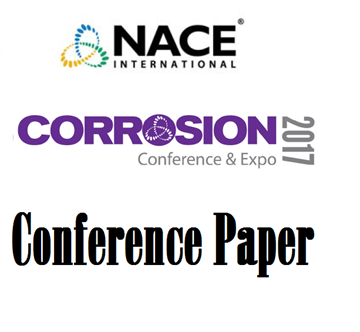Search
Products tagged with 'cathodic protection'
View as
Sort by
Display
per page
TM0101-2012-SG Measurement Techniques Related to Criteria for Cathodic Protection of Underground Storage Tank Systems
Product Number:
21240-SG
ISBN:
1-57590-137-4
Publication Date:
2012
$109.00
TM0105-2018, “Evaluation of Coatings Containing Conductive Carbon Additives for Use as an Anode on Atmospherically Exposed Reinforced Concrete”
Product Number:
21247-SG
ISBN:
1-57590-200-1
Publication Date:
2018
$109.00
TM0105-HD2016, “Evaluation of Coatings Containing Conductive Carbon Pigmentation for Use as an Anode on Atmospherically Exposed Reinforced Concrete”
Product Number:
21247-HD2016
ISBN:
1-57590-200-1
Publication Date:
2016
$179.00
TM0304-2004-SG Offshore Platform Atmospheric and Splash Zone Maintenance Coating System Evaluation
Product Number:
21245-SG
ISBN:
1-57590-194-3
Publication Date:
2004
$109.00
TM0404-2004-SG, Offshore Platform Atmospheric and Splash Zone New C
Product Number:
21246-SG
ISBN:
1-57590-195-1
Publication Date:
2004
$109.00
TM0497-2012-SG (Spanish), “Técnicas de Medición Relacionadas con Criterios para la Protección Catódica en Sistemas de Tuberías Metálicas Sumergidas o Subterráneas”
Product Number:
21267-SG
ISBN:
1-57590-047-5
Publication Date:
2012
$179.00
TM0497-2018, Measurement Techniques Related to Criteria for Cathodic Protection on Underground or Submerged Metallic Piping Systems
Product Number:
21231-SG
Publication Date:
2018
$179.00
TM0497-HD2012-SG Measurement Techniques Related to Criteria for Cathodic Protection on Underground or Submerged Metallic Piping Systems
Product Number:
21231-HD2012
ISBN:
1-57590-047-5
Publication Date:
2012
$179.00
TR01105-2020, Sacrificial Cathodic Protection of Reinforced Concrete Elements—A State-of-the-Art Report
Product Number:
TR01105-2020
Publication Date:
2020
$109.00
TR21463-2020, “Criteria for Evaluation of Cathodic Protection Methods for Steel in Existing Concrete Structures — A State-of-the-Art Report”
Product Number:
TR21463-2020
Publication Date:
2020
$109.00
Use of Corrosion Rate Probes to Evaluate Pipeline Cathodic Protection Performance
Product Number:
51317--9180-SG
ISBN:
9180 2017 CP
Publication Date:
2017
$20.00
Use of data analytics techniques to compare daily RMU coupon readings with CIS survey results
Product Number:
51323-19318-SG
Publication Date:
2023
$20.00












